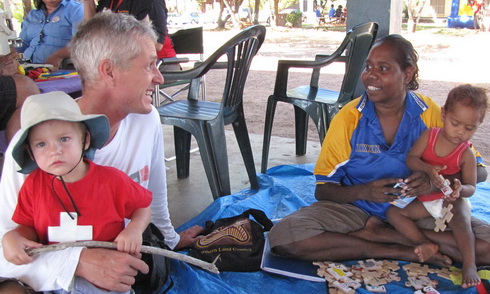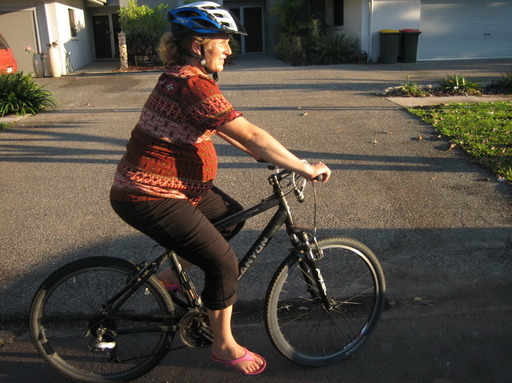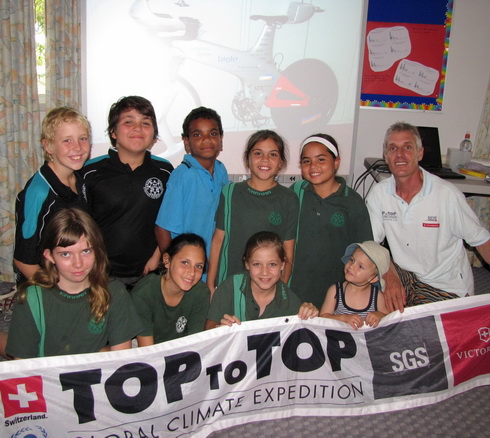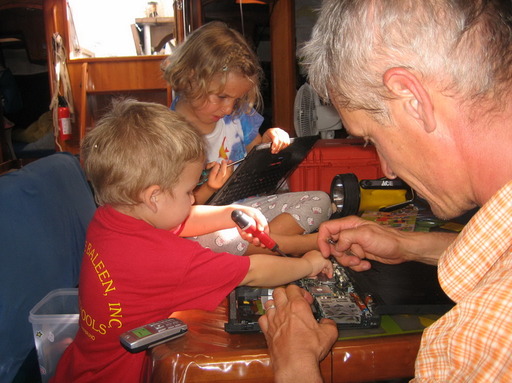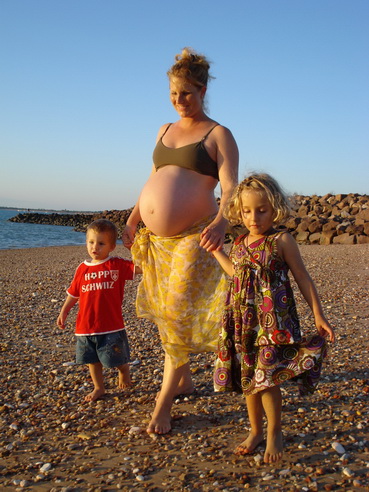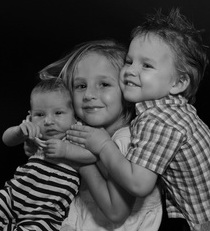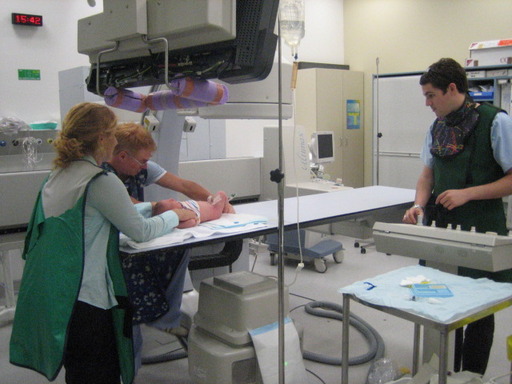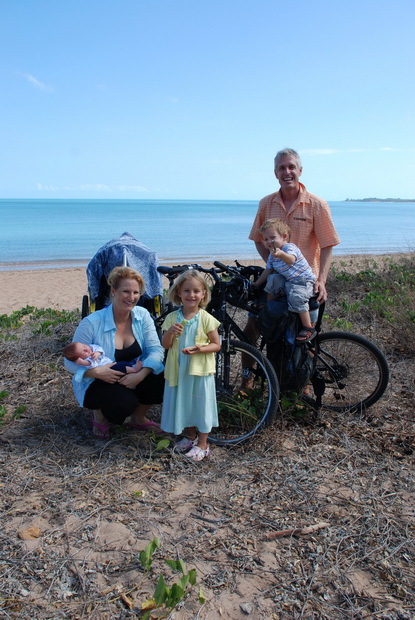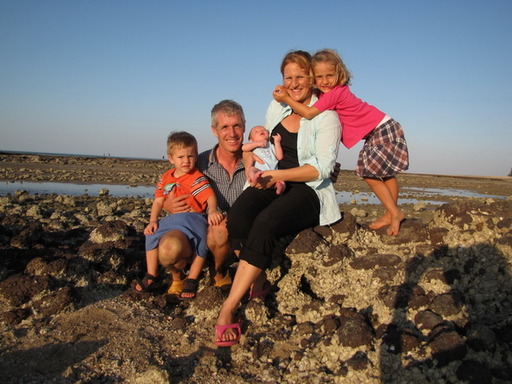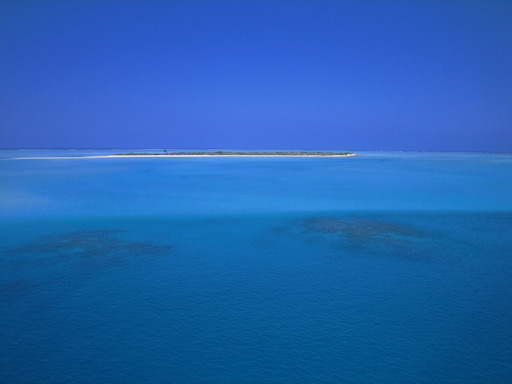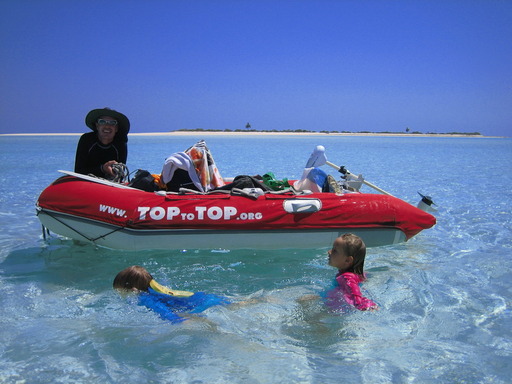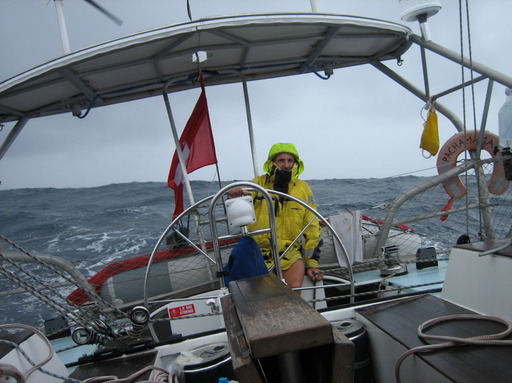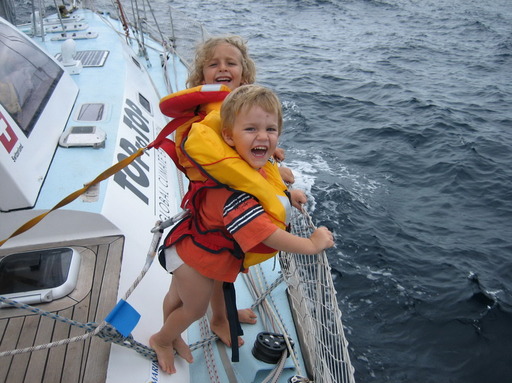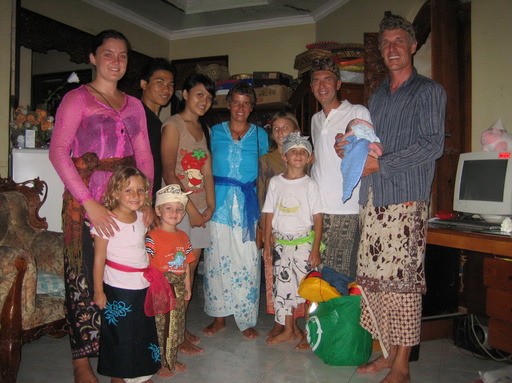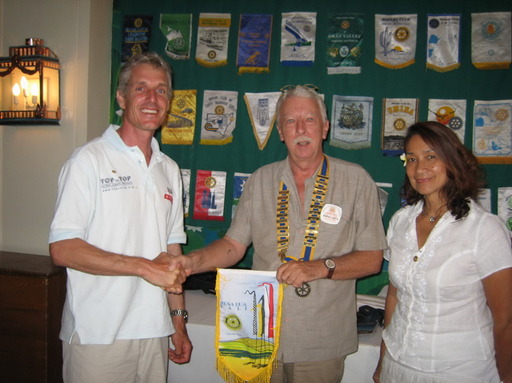September 3, 2009
Departure from Australia
We would like to thank you all for the emails you send us after Noé was born!
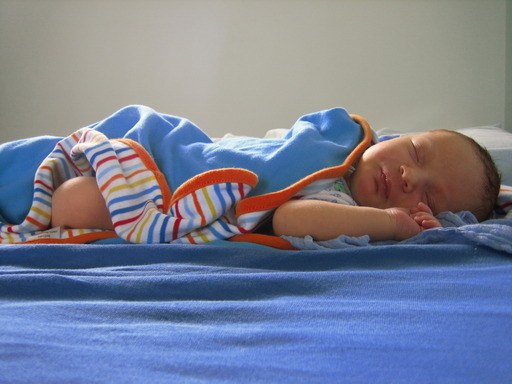
Now some pictures what happened before and after...
Before Noé was born....
Just before Noé was born we were busy in the schools and at the National Aboriginal and Islander Children's Day at Bagot community.
Sabine was cycling till the very last day.
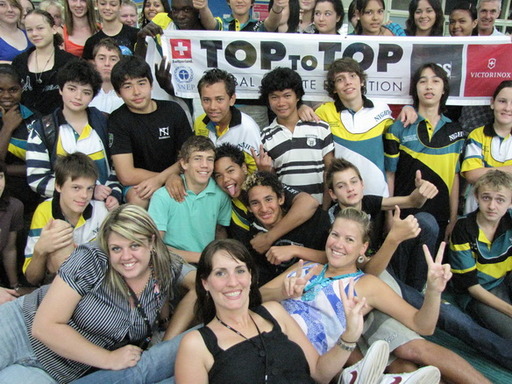 Nightcliff Middle School in Nightcliff
Nightcliff Middle School in Nightcliff
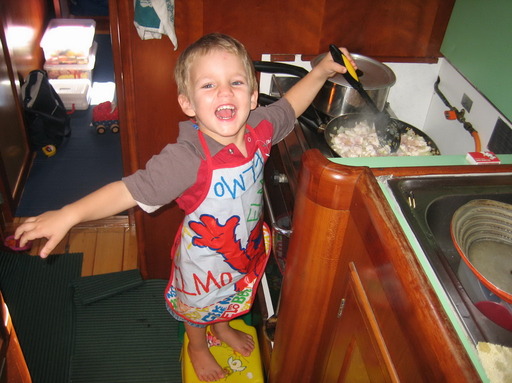
Our kids were helping where ever they could: Mum in the kitchen and dad fixing the computer:
...and there was also some time to relax:
It was very hot on Pachamama. I think Sabine did only survive thanks to Clive's gift: an air-van.
After Noé was born...
We were so happy after all the troubles we went through and it was such a blessing that we were able to stay in Beat Erismann's house. - Thank you very much, Beat! - Salina and Andri are very proud of their brother.
The last two weeks we were busy in the Darwin Royal Hospital to find out what is going on with Noé's kidneys and made several tests.
Thanks to Midwife Mo and Meryl and Dr. Charles Kilburn we were in very good hands and Noé is ready to take his first big leg on the Indian Ocean outside Sabine's stomach. We give him antibiotics as prevention and do another check in 3 months when we arrive in Singapore.
Now we are five on the bikes and visited today our last school in Darwin, the Essington School:
The students are also participating in the solution contest and did some interesting posters and presentations on Global Climate Change.
Begin of next week we have all hands on deck again and continue to Indonesia.
Now it is time to say goodbye to this incredible country Australia with its wonderful people where our son Noé was born. We made so many friends and we don't know how we can express our thanks to you in words: your generosity, help and friendship was so big, - yes, like Australia, to the horizon and even further....
Anchoring in the Ashmore Reef, Western Australia will be our last Australian experience before Asia. Like this we have been with the TOPtoTOP project in all states visiting a total of 10'560 students and covered 4866 km cycling. We made the TOP of the continent, Kosciuszko and have been in its biggest sport event, the Sydney Hobart Yacht Race to promote wind and solar energy. This was all only possible to the many Australian's, donors and supporters helping us out and thanks to our main sponsors Victorinox and SGS and the main patronage from UNEP and Switzerland.
Please note the following announcements:
- Our book is published in German in November; - a good present for your friends and family at Xmas! Please let us know how many you like.
- On the 20th of November 1999 TOPtoTOP was founded. For the 10th anniversary we plan the clean up from the sea to Everest. Please check our planning draft and join us cycling and hiking in January/February 2010 in India and Nepal. The anniversary party we plan in August 2010 together with a TOPtoTOP Camp in the Engadin Valley (2 weeks).
September 23, 2009
Contact in Indonesia
After 1000 nm and 13 days from Darwin, Australia we arrived Bali, Indonesia on the 22nd of September. We had a stop in Ashmore Reef. More in the next expedition report, coming soon...
Our contact number for the next 2 months is +62 81 337 26 7292. Please use this number for school visits, media interview, family, friends, etc.
Rosi and Ernst will join us on the 9th of October from Switzerland. If you have something to ship to us, please send it in time to Fam. Ammannn, Jakobsbadstr. 3, CH-9545 Waengi, Switzerland
September 25, 2009
Ashmore Reef to Bali
Listen to the interview on Swiss radio DRS3.
Thanks to ICOM Australia we were able to upgraded Pachamama with an AIS system. This device makes our passages much safer and we can allocate big ships much better!
Watch the film from Jacqui Hocking of the TOPtoTOP Expedition in the last few months.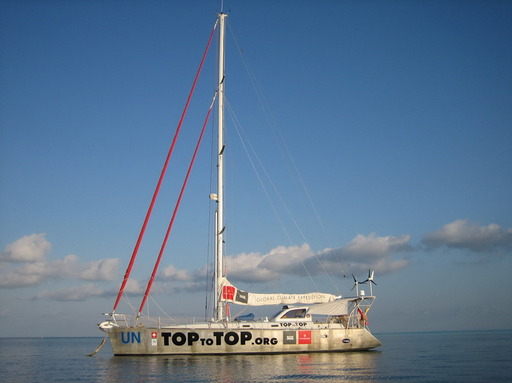
Pachamama with new UN sticker.
We left the lock of Cullen Bay Marina in Darwin on the 10th of September, we waved the mainland goodbye!! But we still had one last chance to experience Western Australia, our first stop; Ashmore Reef!
The Ashmore National Nature Reserve was declared in 1983, however, more recently has become a commonwealth reserve. The aim is to protect the habitat and biodiversity of the reef, and prevent the deterioration which is common in reefs frequented by a large tourist population. Ashmore is part of an essential migratory path for a number of species of birds, which highlights its significance to nature. It is also home to an impressive amount of marine wildlife, most noticeably the sea turtle, which surrounds the waters of the lagoon and ocean.
Few areas of Ashmore are open to the public due to its vital role of the ecosystem. Only the West Island lagoon, along with the islands eastern beachfront, and the pathway access to a lone water pump and well. There are a number of graves on the island from Indonesian fishermen, and only those from Indonesia are allowed to visit them to pay their respects. This agreement was officially set up in 1974 with what was called "A Memorandum of Understanding between Australia and Indonesia." The memorandum stated that traditional Indonesian fishermen would be allowed to enter into Australian waters under certain conditions and agreements. One of those was that they could continue traditionally harvesting "Trepang" (sea cucumber) in the southern areas of Scott Island, however would not be allowed to fish or harvest the Ashmore Reef area. However, they could continue to visit Ashmore reef on the condition that it was used primarily as a stop off to refill water, visit the graves, or simply to rest and take refuge. Not farm.
Research is currently being undertaken about the effect of the "Trepang" harvesting further south, in collaboration with both the Australian and Indonesian governments. Up until now, the environmental impact of this Indonesian tradition has been poorly recorded or studied. However, politically it is a difficult situation, as the Indonesian fishermen are economically dependent on this hundred year old livelihood.
A comprimise both countries have agreed on to control the sustainability of the Trepang, is that the method of harvesting remains traditional. This means that only "Type 1" vessels can be used; sailing without a motor. Many of the fishing-boats seen here have navigated their way by analyzing their environment such as the stars, clouds and ocean patterns. The fishermen are completely in tune to the environment, and are able to maneuver their wooden sailing vessels with ease through the dangerous shallow waters of the reef!
It is possible that the findings of the new research will reveal that the current tactics, although minimal, are unsustainable. The aim however is not to stop the harvesting of the reef, (which would cause a major socio economic disaster for the Indonesian families), but to educate them on better methods of harvesting so that it remains sustainable; for the benefit of the fishermen as well as the environment!
The current situation is almost optimal; the Indonesians can continue what they have been doing for centuries, and Australia can provide conservation guidance and educational support. The department of Environment and Heritage has played an important role distinguishing the bioregions of the area, and protecting the environment. Many research programs are underway, including one on the birdlife and sea snake population. An ocean turtle program is waiting for funding, and will also be starting soon!
We could not have been happier with the friends we made with the Ashmore Reef Guardian Vessel, which runs in collaboration with Customs. Onboard along with the Customs employers, they also have 2 researchers and rangers. They were all a great help and lovely to meet!
But after a good rest at Ashmore Reef, we sat sail once again, heading north towards Indonesia. This time we really did say goodbye to Australia for good! Until next time!
One last stop before Bali was In Lombok, where we saw traditional wooden canoes and beautiful thatched roof houses on the cliff face! Our first taste of a traditional Indonesia! But we didn't stay long! Only time for a good rest, then onwards at midnight to continue!
...and now we just arrived in Bali and had our first presentation at the Rotary Club of Bali Nusa Dua thanks to Mercia Inkiriwang, who invited us afterwards in her house.
